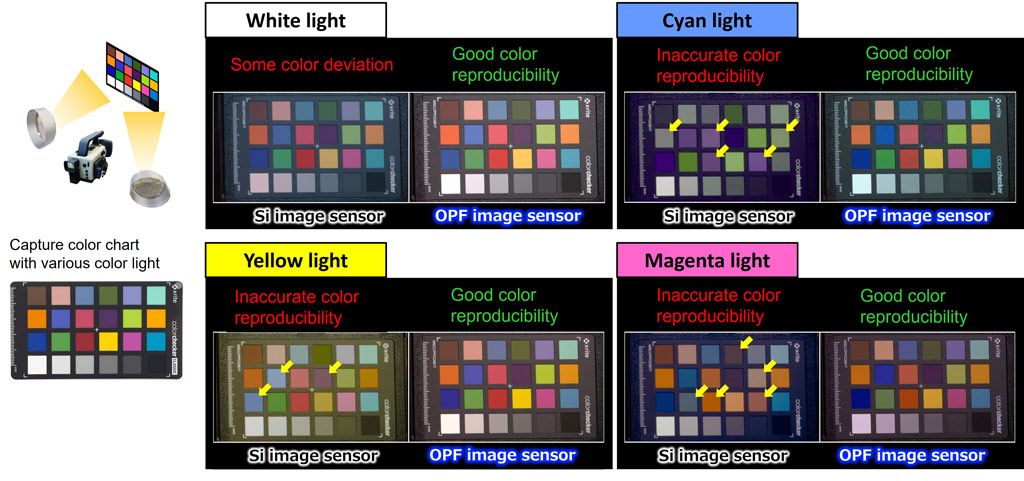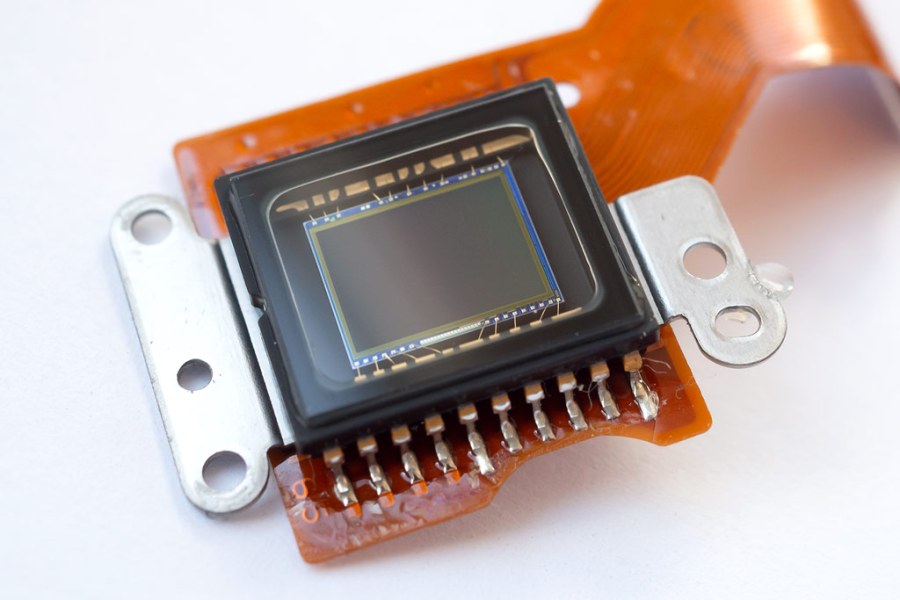Panasonic has been working on a new organic photoconductive film (OPF) CMOS image sensor designed to improve image quality performance, and particularly colour performance in comparison to BSI CMOS sensors – the BSI (or Backside Illuminated) sensor is used in the majority of cameras today whether that’s full-frame mirrorless or compact cameras.

Panasonic image shows the structural layout of a BSI CMOS sensor compared to the OPF CMOS sensor design. Image: Panasonic.
Panasonic say the new Organic CMOS image sensor will allow improved colour reproduction under a variety of lighting conditions, and this could be the next step in improved image quality, much like the transition from CCD sensors to BSI CMOS sensors. However, so far they are suggesting that the sensor could be used in a number of applications, but none of them are specifically digital cameras.

Under a variety of lighting conditions the Organic CMOS Image Sensor shows improved colour reproduction compared to a BSI CMOS sensor. Image: Panasonic.
The applications Panasonic say are suited to this new sensor are mostly industrial with applications such as inspection, parts, etc, health monitor – such as skin care, as well as surveillance and automotive cameras.

Panasonic’s OPF CMOS sensor has an improved light absorption coefficient. Image: Panasonic
There is a suggested application of “commercial broadcasting cameras” and Panasonic has previously announced an 8K high-resolution, global shutter OPF CMOS image sensor in 2018. As a reminder, 8K video resolution is up to 8192×4320 (depending on aspect ratio etc), which is equivalent to 35MP, so the potential for this technology to be used in stills and video cameras is certainly there.
Featured image: Joshua Waller: A 5MP CCD sensor from a vintage digital camera.
From Panasonic: Osaka, Japan – Panasonic Holdings Corporation announced that it has developed excellent color reproduction technology that suppresses color crosstalk by thinning the photoelectric conversion layer using the high light absorption rate of the Organic Photoconductive File (OPF) and by using electrical pixel separation technology. In this technology, the OPF part that performs photoelectric conversion and the circuit part that stores and readouts the electric charge are completely independent. This unique layered structure dramatically reduces the sensitivity of each pixel in green, red, and blue in wavelength regions outside the target range. As a result, color crosstalk is reduced, excellent spectral characteristics are obtained, and accurate color reproduction is made possible regardless of the type of light source.
Continue reading on the Panasonic website.
Related reading
- Micro Four Thirds vs APS-C vs Full-Frame sensors – which is best?
- Why are we so obsessed by full-frame sensors?
- Best Panasonic cameras you can buy








